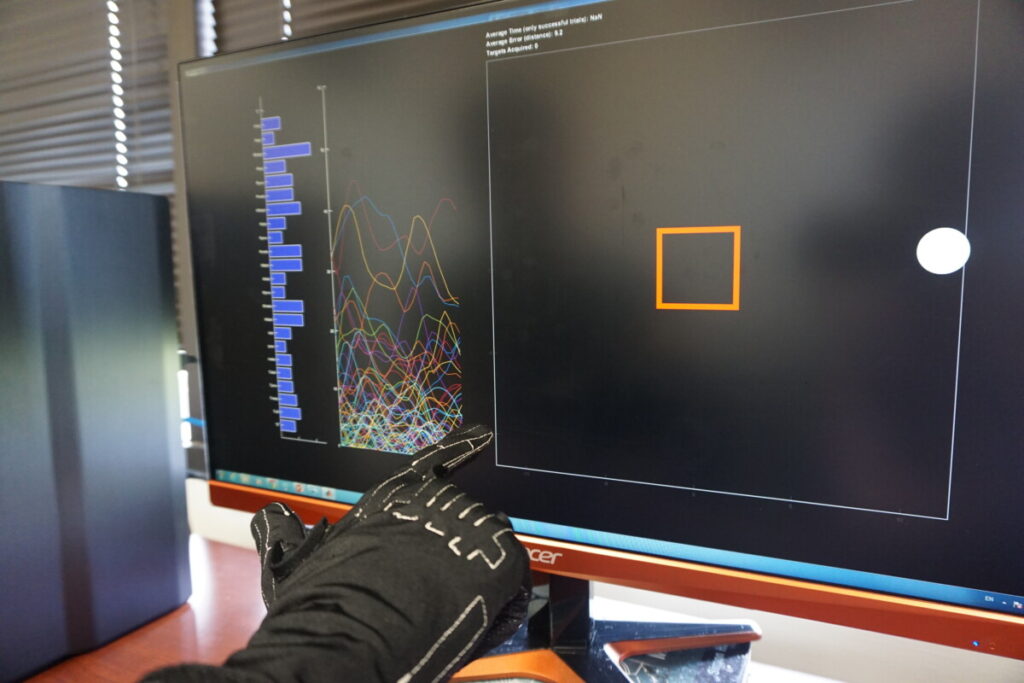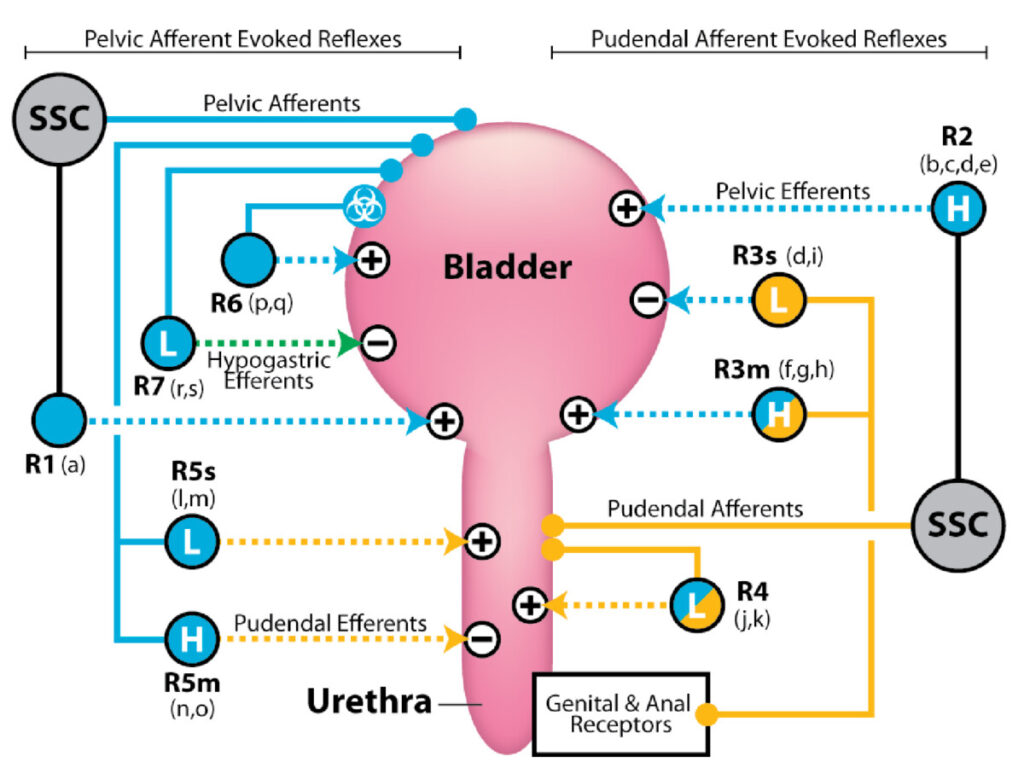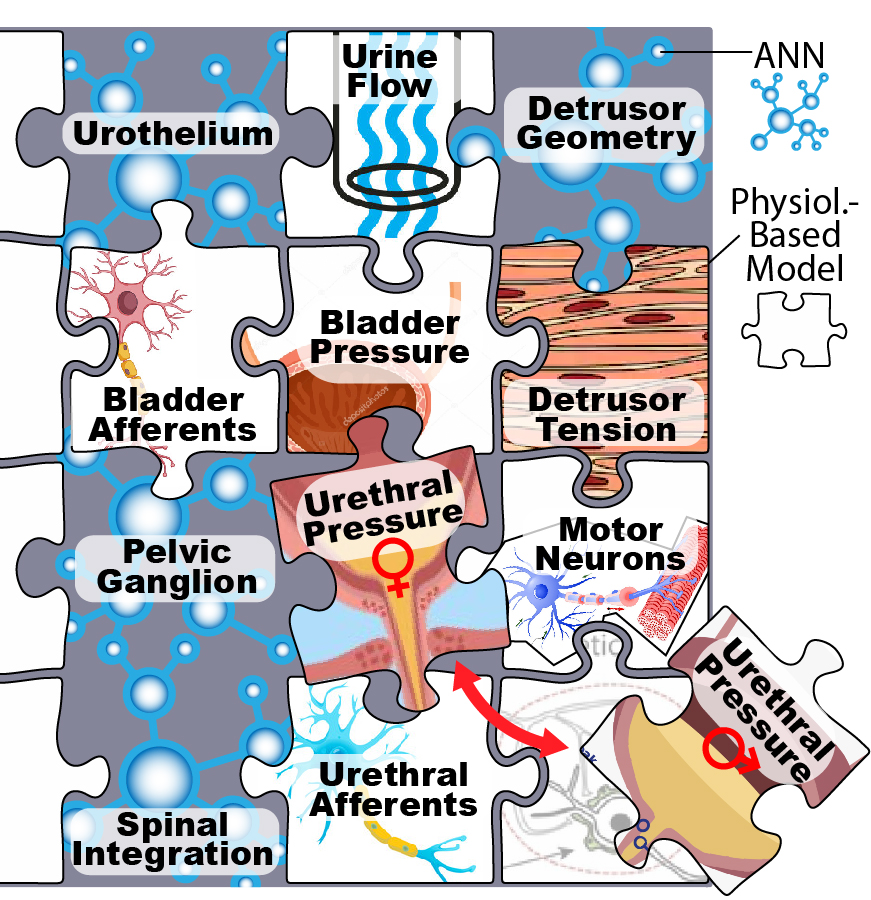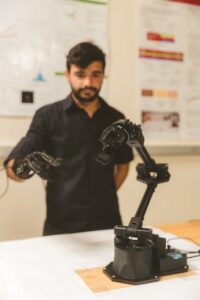The grand goal of our work is to understand how the nervous system controls the body. The body is a big place, so this goal takes us to many different physiological and theoretical territories. Fully voluntary (think arm movement), fully involuntary (think reflexes), mixed control (think urinary bladder), and physical collaboration (think operating a robot) are all different manifestations of how neural control of our muscles manifests action in the world.
A full list of the lab’s scholarly publications is available through ORCID.
Would you like to be involved in our work as a team member or as a research participant?
Brain-Computer Interfaces

Invasive BCIs translate the electrical chatter of neurons (brain cells) into interpretable intentions. That is, electrodes in brain cortex capture neural activity and estimate what the person wants, like to move their computer cursor up or close a prosthetic hand. This technology helps those with severe paralysis who otherwise could not do those fundamental tasks. Our work looks to develop new translation algorithms for BCIs, develop entirely new platforms for BCI research to expedite progress, and understand the “code” the brain uses to represent and execute movements.
Neural Control of the Bladder
Control of the lower urinary tract seems simple at first glance – hold then release – but it is actually regulated by a sophisticated web of interconnected reflexes that we do not yet fully understand. We are using nerve recording, animal studies, and computational models to map how control is organized in continence and voiding. With improved knowledge, we can treat or reverse bladder dysfunction caused by things like spinal injury, natural aging, or diabetes.

Mathematical Systems Physiology

Proper function of any bodily process arises from regulated interacting dynamics of organs and tissues, which we call systems physiology. Its interconnected nature makes it very difficult to understand and predict. We are building new general mathematical tools to simulate physiological systems in the computer by merging traditional mathematics and AI into a single hybrid model. The hybrid simulation gives us a virtual laboratory where we can run thousands of experiments and test as many hypotheses.
Human-Machine Collaboration
Increasingly people have to learn how to work with new technology, like controlling machines or using new computer interfaces. We study how to structure these new environments – and even how to make them adapt to each person’s needs and aptitudes – to improve people’s proficiency. These human-machine collaborations are all mediated through body movement, so understanding the underlying principles of human movement will help us build better systems.
